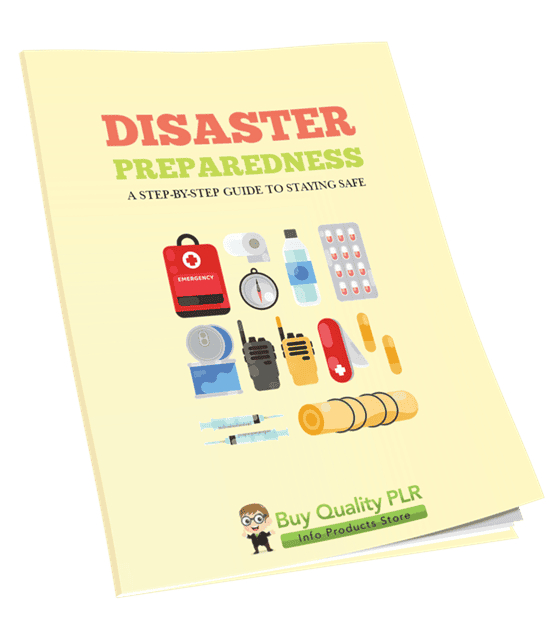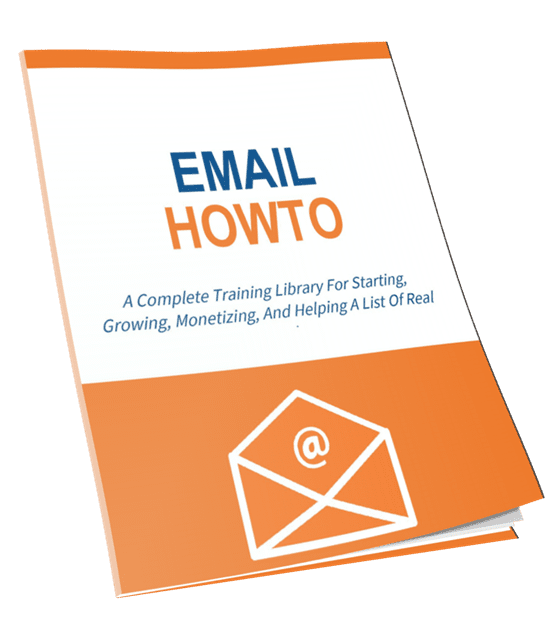
10 Long Form How To Make Money with AI PLR Articles 40k Words
in Artificial intelligence PLR , Artificial Intelligence PLR Articles , Long Form PLR Articles , Make Money PLR , Money PLR Articles , PLR Article Packs , PLR Articles , Private Label Rights ProductsChoose Your Desired Option(s)
has been added to your cart!
have been added to your cart!
aiincomegeneration #moneymakingtips #artificialintelligencewealth #aifinancialstrategies #aiprofitblueprint #earningwithai #aiinvestmentguides #wealthbuildingai #aiincomestreams
Are you tired of finding PLR articles that are only 500–800 words long and leave you underwhelmed by the amount of content provided?
Today, we have the perfect solution for you…
It’s called long-form PLR articles!
What are long-form PLR articles?
They are PLR articles that are over 2000 words each, and you can use them for pretty much anything you’d like, except sell them as PLR.
To see the license terms of our long-form PLR article packs, scroll to the bottom of this page.
has been added to your cart!
have been added to your cart!
10 Long Form How To Make Money with AI PLR Articles 40k Words
Here are the article titles and word count for each article:
- Unlocking the Future: How to Make Money with AI – (3938 words)
- AI Tools for Profit: A Beginner’s Guide to Earning with Artificial Intelligence – (4461 words)
- Best Ways to Use AI to Make Money Online – (2924 words)
- Earning While You Sleep: Unlocking AI’s Potential for Passive Income – (3330 words)
- Artistic Profits: How to Make Money with AI-Generated Art- (3975 words)
- Tech-Savvy Profits: Building Websites with AI for Income – (4028 words)
- Sound of Money: Translating Content to Audio with AI for Cash – (2933 words)
- Smart Sales: Making Money by Selling AI-Generated Courses – (3262 words)
- Up Your Earning Game: How AI Can Skyrocket Your Affiliate Marketing Income! – (4573 words)
- Niche Success: Making Money with AI-Generated Blogs – (3497 words)
Sample Article:
- Chatbot Cash: Selling AI Chatbots for Business Profits – (3259 words)
All long-form PLR articles are provided in Word Doc format.
Here’s a sample article so you know what to expect and can see the quality of the long form PLR content before buying:
This is a sample long-form PLR article from https://www.buyqualityplr.com/plr-store/products/long-form-plr-articles/
chances of converting visitors into customers.
Chatbot Cash: Selling AI Chatbots for Business Profits
Chatbots are becoming more common in businesses in a world where technology is driving everything. What if I told you that these AI-powered chatbots could not only enhance customer interactions but also generate significant profits? Selling AI chatbots for business is a lucrative opportunity that many individuals and companies are discovering. With factual data backing up the potential profitability, let’s explore how you can tap into chatbot cash by selling AI chatbots for business profits.
Introduction
As technology continues to advance, businesses are constantly looking for innovative solutions to improve their operations and enhance customer experiences. One technology that has gained significant popularity in recent years is AI chatbots. These virtual assistants, powered by artificial intelligence, have simplified and automated various aspects of customer service and engagement. This article will delve into the world of AI chatbots and explore how they can be leveraged to generate profits for businesses.
Defining AI Chatbots and Their Increasing Importance in Business
AI chatbots are computer programs designed to simulate human conversation. They use natural language processing and machine learning algorithms to understand and respond to user queries and requests. These chatbots are capable of handling a wide range of tasks, including answering frequently asked questions, providing product recommendations, and even processing transactions.
In the dynamic and fast-paced world of business, time is of the essence. AI chatbots offer businesses the ability to provide instant responses to customer queries, ensuring a seamless and efficient customer experience. By automating repetitive tasks and providing 24/7 support, AI chatbots enable businesses to save valuable time and resources, ultimately leading to increased productivity and customer satisfaction.
The Potential for Selling AI Chatbots for Business Profits
The growing demand for AI chatbots presents an incredible opportunity for businesses to generate profits by offering chatbot solutions to other companies. By developing and selling AI chatbots, businesses can tap into a new revenue stream while addressing the needs of a market craving automation and improved customer experiences.
The benefits of selling AI chatbots for business profits are manifold. Firstly, businesses can capitalize on the increasing adoption of chatbot technology across industries, leveraging the vast potential customer base. Secondly, by offering customizable chatbot solutions, businesses can cater to the specific needs and requirements of different businesses, creating a niche for themselves in the market.
Moreover, with the advancements in AI technology, chatbots are becoming more intelligent and capable. This increased functionality translates into higher value propositions for customers, allowing businesses to charge premium prices for their chatbot solutions. Additionally, ongoing support, updates, and maintenance can be offered as part of the package, generating recurring revenue streams.
AI chatbots hold immense potential for businesses to not only enhance their own operations but also generate profits by offering chatbot solutions to other companies. As the demand for automated customer service and engagement continues to grow, businesses can tap into this market by developing innovative and customizable chatbot solutions. By doing so, they can establish themselves as leaders in the AI chatbot industry and enjoy the financial benefits it brings.
Understanding the Market
Identifying the target audience for AI Chatbots
To successfully sell AI chatbots for business profits, it is crucial to identify the target audience that will benefit from this technology. Various industries and businesses can leverage chatbots to enhance their customer service and engagement. Industries such as e-commerce, healthcare, banking, and travel are prime candidates for AI chatbot solutions.
E-commerce businesses can utilize chatbots to provide personalized product recommendations, answer customer queries, and assist with the purchasing process. In the healthcare sector, chatbots can be used to schedule appointments, provide basic medical information, and offer symptom diagnosis. Banking institutions can integrate chatbots for tasks like balance inquiries, money transfers, and customer support. Similarly, travel agencies can utilize chatbots for itinerary recommendations, travel booking, and answering frequently asked questions.
Market trends and demand for AI Chatbots
The market trends for AI chatbots indicate a significant and growing demand for this technology. According to Grand View Research, the global chatbot market size is expected to reach $1.25 billion by 2025, exhibiting a compound annual growth rate of 24.3%.
The increased demand for AI chatbots can be attributed to several factors. Customers today demand immediate responses and personalized interactions, which chatbots can provide effectively. The ability of chatbots to handle repetitive tasks and provide 24/7 support aligns with evolving customer expectations.
Additionally, businesses are recognizing the cost-saving potential of chatbots. By automating customer interactions, companies can reduce the need for human agents, resulting in significant cost savings.
With advancements in natural language processing and machine learning, chatbots are becoming more intelligent and capable. This increased functionality enhances the customer experience and enables businesses to provide more sophisticated solutions.
Overall, market trends and demand indicate a promising landscape for selling AI chatbots for business profits. By targeting industries that can benefit from chatbot solutions and aligning with evolving customer expectations, businesses can tap into this growing market and generate substantial profits.
Key features and functionality for successful AI Chatbots
To build profitable AI chatbots, it is essential to incorporate key features and functionality that enhance their effectiveness and meet the needs of businesses and customers. Here are some crucial elements to consider:
- Natural Language Processing (NLP): Implementing NLP allows chatbots to understand and interpret human language, enabling them to provide more accurate and relevant responses to user queries.
- Machine Learning: By incorporating machine learning algorithms, AI chatbots can continuously improve and learn from user interactions, leading to better performance over time.
- Personalization: Customizing the chatbot’s responses and experiences to each user enhances engagement and creates a more personalized customer experience.
- Multi-Channel Integration: Integrating chatbots across various platforms and channels, such as websites, social media, and messaging apps, widens their reach and accessibility to customers.
- Seamless Handoff to Human Agents: When a chatbot encounters a complex or sensitive issue, it should seamlessly transfer the conversation to a human agent to ensure effective problem resolution and customer satisfaction.
Designing AI Chatbots that drive business results
To maximize the profitability of AI chatbots, it is crucial to design them with the goal of driving business results. Here are some key considerations:
- Understanding Business Objectives: Align the chatbot’s functionality and capabilities with the specific goals and objectives of the business. Whether it is boosting sales, improving customer service, or increasing operational efficiency, the chatbot should support these objectives.
- Collecting and Analyzing Data: Incorporate data collection capabilities to gather information on customer behavior, preferences, and pain points. Analyzing this data can provide valuable insights for improving the chatbot’s performance and enhancing the overall customer experience.
- Integration with Existing Systems: Integrate the chatbot with existing business systems, such as customer relationship management (CRM) platforms, inventory management systems, and e-commerce platforms, to streamline operations and provide a seamless experience for customers.
- Continuous Improvement: Regularly monitor and analyze the chatbot’s performance, collect user feedback, and make necessary updates and improvements to enhance its effectiveness over time.
By incorporating these key features and designing AI chatbots to drive business results, organizations can create profitable chatbot solutions that enhance customer engagement, improve operational efficiency, and generate substantial business profits.
Marketing and Selling AI Chatbots
Strategies for promoting and selling AI Chatbots
When it comes to marketing and selling AI chatbots, there are several effective strategies that businesses can employ. Here are some key approaches to consider:
- Targeted Advertising: Utilize online advertising platforms such as Google Ads or social media platforms like Facebook and LinkedIn to reach your target audience. Develop compelling ad campaigns that highlight the benefits of AI chatbots for businesses, such as improved customer service, increased efficiency, and cost savings.
- Content Marketing: Create informative and engaging content that educates potential customers about the advantages of using AI chatbots. This could include blog posts, articles, whitepapers, and case studies that demonstrate the value of chatbots in various industries.
- Demonstrations and Trials: Offer free demos or trials of your AI chatbot to give potential customers a firsthand experience of its capabilities and benefits. This can help build trust and confidence in your solution and increase the likelihood of conversion to a paid subscription.
- Industry Partnerships: Collaborate with industry influencers, thought leaders, or complementary technology providers to expand your reach and credibility. This can involve guest blogging, co-marketing initiatives, or joint webinars to demonstrate the value of AI chatbots to their audiences.
- Word of Mouth: Encourage satisfied customers to share their positive experiences with your AI chatbot. This can be done through testimonials, case studies, or referral programs, which can generate organic word-of-mouth marketing and attract potential customers.
Pricing models and packaging options
When it comes to pricing AI chatbots, businesses can consider various models and packaging options to meet the diverse needs of their customers. Here are some common approaches:
- Subscription-based: Offer different pricing tiers based on the number of users, features, or usage limits. This allows businesses to choose a plan that aligns with their requirements and budget.
- Pay-per-use: Charge customers based on the actual usage of the AI chatbot, such as the number of interactions or conversations. This model offers flexibility and scalability for businesses with fluctuating demand.
- Customized Pricing: Tailor pricing packages based on specific customer needs, such as providing additional customization or integration services. This allows businesses to cater to individual requirements while maximizing revenue potential.
- Enterprise Licensing: Offer enterprise-level licensing agreements for large organizations that require extensive customization, integration, and support services. This model provides a higher level of service and support, typically at a higher price point.
By implementing effective marketing strategies and offering flexible pricing models, businesses can successfully promote and sell AI chatbots. It is important to continuously monitor market trends, gather feedback from customers, and adapt your approach to stay competitive in the ever-evolving AI chatbot landscape.
Case Studies of Successful AI Chatbot Businesses
Examining real-life examples of profitable AI Chatbot ventures
As AI chatbots continue to gain popularity, more businesses are exploring their potential to generate profits and enhance customer experiences. Here, we’ll examine some real-life examples of successful AI chatbot ventures and the key lessons learned from their journeys.
- Sephora Virtual Artist: A renowned beauty retailer, Sephora, unveiled its AI-powered virtual artist chatbot.This chatbot allows users to try on different makeup looks virtually, ask for product recommendations, and even book in-store appointments. Through the virtual artist, Sephora not only provides a personalized and interactive experience but also boosts sales and customer satisfaction.
- PayPal’s chatbot for customer support: PayPal implemented an AI chatbot to facilitate customer support, automating responses to frequently asked questions and resolving issues faster. By leveraging chatbot technology, PayPal improved customer service, reduced response times, and saved costs associated with call center operations.
- Domino’s Pizza ordering chatbot: Domino’s Pizza integrated a chatbot into its ordering system, allowing customers to place their orders through various messaging platforms. By simplifying the ordering process and offering a seamless user experience, Domino’s significantly enhanced customer convenience and increased sales.
These successful AI chatbot businesses provide valuable insights and key takeaways for other ventures looking to emulate their success:
- Personalization is key: Tailoring interactions and recommendations to individual customers’ preferences can significantly improve engagement and conversion rates.
- Automation saves time and resources: AI chatbots can efficiently handle repetitive tasks, enabling businesses to redirect resources to more strategic initiatives and reducing operational costs.
- Seamless integration: Making the chatbot easily accessible across multiple platforms, such as websites, messaging apps, and social media, enhances convenience and engagement.
- Continuous improvement: Regularly analyzing customer feedback and data can help refine and enhance the chatbot’s performance, ensuring it meets evolving customer needs and expectations.
Lessons learned and key takeaways
In conclusion, these case studies highlight that successful AI chatbot businesses prioritize personalization, automate repetitive tasks, seamlessly integrate across platforms, and continuously strive for improvement. By applying these key principles and leveraging the power of AI chatbot technology, businesses can generate profits, enhance customer experiences, and stay ahead in today’s digital landscape.
Overcoming Challenges
Common challenges in selling AI Chatbots and how to overcome them
Selling AI chatbots for business profits can be a lucrative endeavor, but it is not without its challenges. Here, we will explore some common hurdles faced by businesses in this field and provide effective strategies to overcome them.
- Limited Awareness: One of the primary challenges is the limited awareness of AI chatbot capabilities and their potential benefits. Many businesses may not fully understand how chatbots can streamline processes, enhance customer experiences, and drive profitability. To overcome this, it is crucial to educate potential customers through targeted marketing campaigns, case studies, and live demos, showcasing the specific advantages and success stories of AI chatbots.
- Integration Complexity: Integrating AI chatbots into existing systems and workflows can be complex, especially for businesses with outdated technology infrastructure. To address this challenge, it is essential to offer comprehensive integration support and provide clear documentation and guidelines. Demonstrating how the chatbot can seamlessly integrate with existing systems and highlighting the potential time and cost savings will help alleviate concerns.
- Security and Privacy Concerns: Another challenge lies in addressing customer concerns regarding data security and privacy. Many customers worry about sharing personal information or interacting with AI-powered systems. To overcome these concerns, businesses must prioritize security measures, clearly communicate their data protection policies, and ensure compliance with relevant regulations and standards.
Addressing customer concerns and objections
To successfully sell AI chatbots, it is crucial to address customer concerns and objections proactively. Here are some key strategies to consider:
- Educate and Communicate: Provide clear and concise information about how the chatbot operates, what data is collected, and how it is used. Transparency and open communication help build trust and alleviate concerns.
- Empower Personalization: Assure customers that their interactions with the chatbot are tailored to their preferences and needs. Highlight the benefits of personalized recommendations, efficient issue resolution, and 24/7 support.
- Showcase Success Stories: Share case studies and testimonials from satisfied customers who have experienced the benefits of AI chatbots. Highlight specific results, such as increased customer satisfaction, cost savings, and improved operational efficiency.
- Offer Customer Support: Provide accessible and responsive customer support channels to address any concerns or issues quickly. Demonstrating your commitment to customer satisfaction and prompt problem resolution builds confidence in your chatbot solution.
In conclusion, while there may be challenges in selling AI chatbots for business profits, being proactive in addressing customer concerns and overcoming implementation hurdles can lead to success. By educating potential customers, offering integration support, prioritizing security, and showcasing the benefits of AI chatbots through real-world examples, businesses can effectively sell AI chatbots and drive profitability in today’s competitive landscape.
The Future of AI Chatbots in Business
Exploring the potential growth and evolution of AI Chatbots
The future of AI chatbots in business looks promising as these intelligent virtual assistants continue to evolve and provide excellent benefits to organizations. As technology advances, AI chatbots are becoming more sophisticated and capable, offering seamless interactions and personalized experiences for customers. Here are some key factors that contribute to the potential growth and evolution of AI chatbots:
Increased Efficiency and Automation:
AI chatbots have the ability to handle repetitive tasks and provide instant responses, saving valuable time for both businesses and customers. As businesses embrace automation and efficiency in their operations, AI chatbots will play a crucial role in streamlining processes and increasing productivity.
Enhanced Customer Experience:
AI chatbots provide 24/7 support, instant responses, and personalized interactions. This leads to improved customer satisfaction and loyalty. As businesses continue to prioritize exceptional customer experiences, AI chatbots will become an integral part of their strategies.
Natural Language Processing:
Advancements in natural language processing technology enable AI chatbots to understand and respond to complex queries more effectively. This paves the way for more natural and human-like conversations, enhancing the overall user experience.
Emerging trends and opportunities
The future of AI chatbots also brings with it exciting emerging trends and opportunities for businesses to capitalize on:
Voice-Activated Chatbots:
The rise of voice-activated assistants like Siri, Alexa, and Google Assistant has opened up new possibilities for AI chatbots. Businesses can leverage this trend by developing voice-activated chatbots that provide hands-free interactions and cater to the growing demand for voice-based technology.
Integration with Augmented Reality and Virtual Reality:
Integrating AI chatbots with augmented reality (AR) and virtual reality (VR) technology opens up opportunities for immersive and interactive customer experiences. Businesses can utilize this combination to provide virtual product demonstrations, personalized virtual shopping experiences, and more.
Personalization and Data Analysis:
AI chatbots have the ability to gather and analyze vast amounts of customer data. By utilizing this data effectively, businesses can deliver personalized recommendations, targeted marketing campaigns, and tailored customer experiences.
The future of AI chatbots in business holds great potential for growth and evolution. With increased efficiency, enhanced customer experiences, and emerging trends like voice-activated chatbots and integration with AR and VR, businesses can leverage AI chatbots to stay ahead in the competitive landscape. By embracing these opportunities and continuously improving AI chatbot capabilities, organizations can unlock new levels of success and profitability.
Conclusion
The profitability potential of selling AI chatbots to businesses is undeniable. As organizations continue to prioritize efficiency, enhanced customer experiences, and staying ahead in the competitive landscape, AI chatbots offer a valuable solution. By saving time and streamlining processes, these intelligent virtual assistants contribute to increased productivity and automation. Furthermore, their ability to provide 24/7 support, instant responses, and personalized interactions enhances customer satisfaction and loyalty. With advancements in natural language processing, AI chatbots can understand and respond to complex queries, creating more natural and human-like conversations for users.
A recap of the profitability potential of selling AI Chatbots
- Increased Efficiency and Automation: AI chatbots handle repetitive tasks and provide instant responses, saving valuable time for businesses and customers. This contributes to streamlined processes and increased productivity.
- Enhanced Customer Experience: AI chatbots offer 24/7 support, personalized interactions, and instant responses, leading to improved customer satisfaction and loyalty. They play a crucial role in delivering exceptional customer experiences.
- Natural Language Processing: Advancements in natural language processing technology enable AI chatbots to understand and respond to complex queries more effectively, enhancing the overall user experience.
Final thoughts and recommendations
As businesses look towards the future, integrating AI chatbots into their strategies can unlock new levels of success and profitability. The emerging trends of voice-activated chatbots and integration with augmented reality and virtual reality present exciting opportunities for immersive and interactive customer experiences. Leveraging the data gathered by AI chatbots allows for personalized recommendations, targeted marketing campaigns, and tailored customer experiences.
It is essential for businesses to embrace these opportunities, continuously improve AI chatbot capabilities, and stay updated on the latest advancements in AI technology. By doing so, organizations can position themselves as industry leaders and maximize profits. The future of AI chatbots in business is bright, and those who capitalize on this technology will reap the rewards in the long run.
Thank you for joining us on this journey into the world of AI chatbots and their potential for business profits. I hope you found the information in this blog post insightful and helpful in understanding the lucrative opportunities that exist in the chatbot market.
If you have any questions or thoughts about selling AI chatbots for business profits, we would love to hear from you. Feel free to leave a comment or reach out to us directly.
Stay tuned for more informative content on making money with AI.
This is a sample article from BuyQualityPLR.com.
You can find more long-form PLR articles here:
https://www.buyqualityplr.com/plr-store/products/long-form-plr-articles/
has been added to your cart!
have been added to your cart!
Here’s the truth about long-form content:
Google prefers long-form content; they just tend to rank better than shorter articles as they provide better, more detailed answers to people who search on Google.
And if you hired a copywriter to write 2000+ articles, they would charge you $3–$5 per 100 words ($60 per article), which is the going rate for long-form unique articles.
So, a pack of 10 articles of 20,000 words could easily cost you $600 if you hired a copywriter to write unique content for you.
But today, you won’t pay anything near that for these 10 Long-form How To Make Money with AI PLR Articles .
These articles are available for $19.99; that’s $2 per article!
has been added to your cart!
have been added to your cart!
We are limiting these How To Make Money with AI long-form PLR articles to the next 100 customers.
So, you’ve got to act fast if you’d like to get a PLR license to these PLR articles today; once 100 licenses are sold, we will be removing them from our store.
Ways You Can Use PLR Articles:
- Blog Posts: Publish PLR articles on your blog to provide valuable content to your readers and drive traffic to your website.
- Social Media Content: Break down PLR articles into shorter snippets and share them on your social media platforms to engage your audience.
- Email Newsletters: Adapt PLR articles for your email newsletters to keep your subscribers informed and provide them with valuable insights.
- Lead Magnets: Transform PLR articles into downloadable guides, reports, or ebooks to offer as lead magnets and grow your email list.
- Content Upgrades: Enhance existing blog posts with relevant PLR articles as content upgrades, providing additional value to your readers.
- Guest Blogging: Rewrite and customize PLR articles to submit as guest posts on other blogs, increasing your visibility and authority.
- Online Courses: Utilize PLR articles as content modules or lessons for creating online courses and sharing your expertise.
- Podcast Episodes: Convert PLR articles into podcast episodes by narrating the content and providing additional insights.
- Video Scripts: Adapt PLR articles into video scripts for creating informative and engaging videos for your YouTube channel or other video platforms.
- Compilation Books: Compile multiple related PLR articles into a comprehensive ebook or print book, offering it as a product or giveaway.
Package Details:
10 Long-form How To Make Money with AI PLR Articles (Titles below)
- Unlocking the Future: How to Make Money with AI – (3938 words)
- AI Tools for Profit: A Beginner’s Guide to Earning with Artificial Intelligence – (4461 words)
- Best Ways to Use AI to Make Money Online – (2924 words)
- Earning While You Sleep: Unlocking AI’s Potential for Passive Income – (3330 words)
- Artistic Profits: How to Make Money with AI-Generated Art- (3975 words)
- Tech-Savvy Profits: Building Websites with AI for Income – (4028 words)
- Sound of Money: Translating Content to Audio with AI for Cash – (2933 words)
- Smart Sales: Making Money by Selling AI-Generated Courses – (3262 words)
- Up Your Earning Game: How AI Can Skyrocket Your Affiliate Marketing Income! – (4573 words)
- Niche Success: Making Money with AI-Generated Blogs – (3497 words)
Sample Article:
- Chatbot Cash: Selling AI Chatbots for Business Profits – (3259 words)
Total Word Count: (40 923 words)
Bonus Content
Making Money with AI FAQs – (692 word)
PLR License Terms: What You Can Do:
- You can use this content on your blog.
- You can edit the content as you wish.
- You can use this content to create ebooks.
- You can use this content to create lead magnets.
- You can use this content to create video courses.
- You can use this content to create videos for YouTube.
- You can use this content to for content marketing.
- You can break the articles up into multiple articles.
- You can use the content for emails.
- You can use the content to create audios.
- You can sell the content in PDF format.
- You can use the content to create coaching courses.
- You can monetize the content with your affiliate links or own products.
- You can charge for access to read this content. For example, a paid ebook, membership site or other paid access content.
- You can translate the content into another language
- You can use the content anywhere you publish content
What you cannot do:
- You can sell PLR to this content.
- If you’re selling this content, it must be in PDF format.
- You CANNOT sell this product with a PLR, MRR or Resell Rights License.
Share Now!












